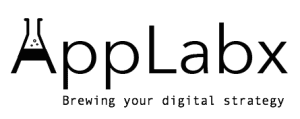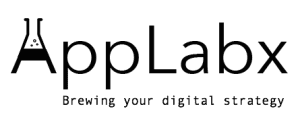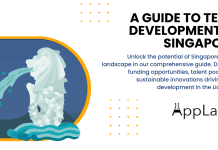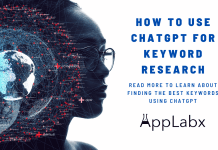Key Takeaways
- GEO is reshaping digital visibility by prioritizing brand citations and AI-driven answers over traditional keyword rankings.
- Businesses must invest in prompt engineering, structured data, and AI-centric SEO tools to stay competitive in generative search.
- Ethical data curation, human oversight, and platform-specific GEO strategies are essential for sustainable AI visibility in 2025.
In 2025, the digital marketing ecosystem has reached a significant inflection point, catalyzed by the exponential rise of generative artificial intelligence (AI) and its integration into the way people search, discover, and consume information online. Traditional search engine optimization (SEO) practices—once the dominant framework for achieving digital visibility—are now being fundamentally redefined by the advent of Generative Engine Optimization (GEO). This new paradigm is not merely an evolution but a transformation, shaped by the emergence of AI-powered platforms such as ChatGPT, Google Gemini, Perplexity AI, Claude, and others that offer direct, conversational answers without requiring users to click on traditional web links.

GEO, or Generative Engine Optimization, refers to the suite of strategies, tools, and content frameworks that enable brands, organizations, and digital entities to appear prominently within AI-generated search results. Unlike classical SEO, which focuses on keyword rankings and backlinks within indexed search results, GEO addresses the nuances of visibility within large language models (LLMs), real-time AI answers, AI summaries, and zero-click environments. The shift toward GEO represents a profound reorientation in digital marketing—one that necessitates new KPIs, new optimization techniques, and new ways of measuring success.
Why GEO Matters in 2025: Understanding the Strategic Imperative
- AI-first search experiences are now mainstream: Over 40% of global users regularly consult AI platforms as their primary source of information, bypassing traditional search engines.
- Zero-click answers dominate user behavior: With the rise of voice search, AI-generated summaries, and AI assistants, the number of users receiving answers without ever clicking a link has reached unprecedented levels.
- Traditional SEO metrics are insufficient: Visibility, brand mentions, and AI-based citations within generative responses are now more relevant indicators of digital authority and brand reach.
- The generative AI market is booming: The global generative AI market is projected to reach $1 trillion by 2034, with marketing technology being one of its fastest-growing subdomains.
These tectonic shifts are compelling marketing teams, content strategists, and C-level decision-makers to invest in GEO-focused frameworks that align with this new digital reality. Organizations are now prioritizing AI visibility, developing strategies to ensure that their content is discoverable, quotable, and trusted by LLMs.
What This Report Covers: A Holistic, Data-Backed GEO Landscape
This comprehensive analysis of The State of GEO in 2025 brings together the latest data, market insights, expert strategies, and technology trends to offer readers a robust understanding of how GEO is reshaping the digital visibility landscape. Specifically, this blog will explore:
1. Defining GEO and How It Differs from Traditional SEO
- Clear explanation of what GEO entails in today’s AI-driven search landscape
- Comparative analysis between GEO and legacy SEO practices
- Why GEO is indispensable in a zero-click, answer-first ecosystem
2. The Growth of AI Search Platforms and User Adoption Trends
- Market share breakdown of major AI search platforms
- Changing consumer behavior patterns
- Why users are shifting from Google to AI-powered alternatives
3. Tools, Plugins, and Technology Stack for GEO Success
- Detailed matrix of top GEO tools in 2025
- Key features, pricing, and performance metrics of GEO plugins
- How enterprise and SMBs are deploying GEO software at scale
4. New Performance Metrics for GEO Measurement
- AI citation tracking, brand visibility within AI, voice search performance
- Answer Engine Optimization (AEO) scores and traffic attribution
- ROI frameworks for AI-assisted marketing
5. Success Stories and Real-World Case Studies
- Data-backed performance from brands like L’Oréal, Canva, and Rocky Brands
- How early adopters achieved exponential growth in leads, conversions, and ROI
- SEO agency results and campaign-level impact breakdowns
6. Challenges, Limitations, and Ethical Considerations
- Issues of AI bias, content hallucinations, and misinformation
- The role of human oversight, E-E-A-T compliance, and fact-checking
- Legal and regulatory frameworks, especially around data privacy and content attribution
7. Future Projections and What Comes Next for GEO
- Strategic forecasts on where GEO is heading by 2027 and beyond
- Prompt engineering as the next “keyword research”
- Multimodal optimization across voice, text, and video AI interfaces
GEO Is Not Optional—It’s the Future of Search
Organizations that fail to recognize the shift toward AI-centric digital discovery risk becoming invisible in the most influential content ecosystems of the future. The brands that will thrive are those that strategically embed themselves into LLM architectures, train their content for AI citation and inclusion, and develop GEO-specific workflows that complement human creativity with machine scalability.
This blog aims to provide not only a foundational understanding of GEO in 2025 but also a practical, actionable roadmap for marketers, technologists, and decision-makers who seek to gain a competitive edge in the evolving AI-first digital economy.
Stay with us as we explore the data, decode the strategies, and uncover the innovations driving the next generation of search visibility. The GEO revolution is here—and understanding it is the first step toward mastering it.
But, before we venture further, we like to share who we are and what we do.
About AppLabx
From developing a solid marketing plan to creating compelling content, optimizing for search engines, leveraging social media, and utilizing paid advertising, AppLabx offers a comprehensive suite of digital marketing services designed to drive growth and profitability for your business.
At AppLabx, we understand that no two businesses are alike. That’s why we take a personalized approach to every project, working closely with our clients to understand their unique needs and goals, and developing customized strategies to help them achieve success.
If you need a digital consultation, then send in an inquiry here.
The State of Generative Engine Optimization (GEO) in 2025: A Data-Driven Analysis
- AI Reshaping Search Behavior: A Paradigm Shift
- Defining the 2025 Generative Engine Optimization (GEO) Landscape: A Data-Driven Insight into AI-First Visibility
- Market Adoption and Economic Impact of Generative AI on Digital Search in 2025
- Enterprise and Consumer Adoption of Generative AI for Search: Strategic Implications for GEO in 2025
- The Strategic Impact of Generative AI on Marketing and Content Creation in 2025
- Core Pillars of an Effective GEO Strategy in 2025
- Technical Foundations for AI Crawlability in the GEO Era
- Mastering Prompt Engineering for GEO in 2025: A Strategic Enabler of AI Visibility
- Strategic Data Curation for GEO Models: The Backbone of AI-Centric Visibility in 2025
- The Emerging GEO Technology Stack: Key Tools Powering AI-Search Optimization in 2025
- Measuring the Effectiveness and Return on Investment (ROI) of Generative Engine Optimization (GEO) in 2025
- Real-World Case Studies and Measurable Successes in Generative Engine Optimization (GEO) in 2025
- Challenges and Ethical Considerations in Generative Engine Optimization (GEO)
- Future Trajectory of Generative Engine Optimization (GEO) in 2025 and Beyond
1. AI Reshaping Search Behavior: A Paradigm Shift
The digital marketing ecosystem of 2025 has undergone a significant transformation, driven by the rise of artificial intelligence and its integration into content discovery systems. Generative Engine Optimization (GEO) now stands at the forefront of strategic visibility, reshaping how brands interact with increasingly AI-mediated audiences. GEO is no longer a complement to Search Engine Optimization (SEO); it is a parallel discipline, essential for survival in an AI-first web environment.
AI Reshaping Search Behavior: A Paradigm Shift
- AI as the Primary Discovery Channel
- 71% of Americans now use AI tools for daily information retrieval.
- 58% of global users prefer AI assistants and chat-based interfaces over traditional search engines for product and service discovery.
- AI-generated responses reduce the need for manual link-clicking, leading to a surge in “zero-click” interactions.
- Impact on Traditional SEO Metrics
- In the presence of AI Overviews, organic click-through rates (CTR) have declined between 18% and 64%.
- Projections show that 60% of all online searches in the US and Europe will not result in a click by the end of 2025.
Chart: Rise of AI-Driven Search vs Traditional Clicks (2020–2025)
| Year | AI Usage for Search (%) | Traditional Search CTR (%) |
|---|---|---|
| 2020 | 12% | 84% |
| 2023 | 41% | 61% |
| 2025 | 71% | 39% |
The GEO Imperative: Economic & Strategic Value
- Market Dynamics
- The global generative AI market is valued at $37.89 billion in 2025.
- By 2034, this market is expected to surpass $1 trillion, driven by a CAGR of 44.2%.
- Enterprise Adoption Metrics
- 78% of global enterprises have integrated generative AI into their workflows.
- 92% plan to increase their investment in generative AI between 2025 and 2027.
- Return on Investment (ROI)
- Every $1 spent on generative AI yields an average return of $3.71.
- Industry-specific ROI:
- Financial Services: 4.2x
- Media & Telecommunications: 3.9x
Table: GEO Investment ROI by Sector (2025)
| Industry | ROI per $1 Investment |
|---|---|
| Financial Services | 4.2x |
| Media & Telecommunications | 3.9x |
| Retail & eCommerce | 3.5x |
| Healthcare | 3.2x |
| Manufacturing | 2.9x |
Business Growth & Competitive Advantage
- Lead Generation and Client Acquisition
- 77% of GEO-implementing organizations report an increase in lead volume and quality.
- 63% attribute measurable business growth directly to generative AI-driven strategies.
- Brand Visibility and Market Share
- Brands using GEO techniques have experienced a 26% uplift in online visibility.
- AI-surfaced content (summarizations, featured prompts, answer boxes) increasingly dominates page real estate.
Challenges in the Generative Landscape
Despite remarkable growth and adoption, the generative ecosystem is not without its challenges.
- Inaccuracy and “Hallucinations”
- Only 25% of generative model outputs are consistently factual.
- Hallucinations pose risks to brand credibility, especially in regulated industries.
- Bias and Ethical Concerns
- AI systems are often trained on skewed datasets, resulting in embedded cultural, gender, and racial biases.
- Unchecked content may lead to misinformation and reputational harm.
- Human Oversight as a Standard
- Human-AI collaboration is critical to ensuring content fidelity.
- Editorial oversight, fact-checking, and validation pipelines are essential components of any GEO strategy.
Matrix: Key GEO Challenges and Mitigation Strategies
| Challenge | Description | Mitigation Approach |
|---|---|---|
| AI Hallucinations | Outputs factually incorrect content | Human editorial review, dataset refinement |
| Bias in Responses | Reflects cultural or ideological skew | Inclusive data curation, bias testing |
| Brand Inconsistency | Deviates from brand voice or messaging | Prompt engineering, style guides |
| Legal Risks | Generates content violating regulations | Legal audit, compliance filtering |
Strategic Blueprint for GEO Success
To harness the full potential of GEO in 2025, organizations must adopt a comprehensive and strategic approach:
- Advanced Content Optimization
- Optimize not just for keywords, but for prompt-readiness, language models, and context-specific intent.
- Technical Infrastructure
- Enhance structured data, schema markup, and LLM-optimized metadata.
- Prompt Engineering
- Design query triggers, anticipated responses, and brand-aligned voice patterns.
- Data Curation & Governance
- Clean, validate, and diversify training and reference data sources.
- Ethical AI Implementation
- Incorporate fairness, transparency, and accountability into all generative outputs.
Conclusion: GEO as a Strategic Necessity
Generative Engine Optimization has evolved from a niche tactic to a central pillar of digital strategy. For brands operating in 2025 and beyond, GEO is not optional—it is fundamental. As user behavior shifts toward AI-assisted search and interaction, only those organizations that integrate GEO across their digital ecosystems will remain competitive.
Success in this new paradigm will depend on mastering the balance between automation and human intelligence—leveraging the speed and scale of AI while anchoring outputs in accuracy, trust, and brand authenticity.
2. Defining the 2025 Generative Engine Optimization (GEO) Landscape: A Data-Driven Insight into AI-First Visibility
Generative Engine Optimization (GEO) has emerged in 2025 as a strategic frontier in digital visibility, redefining how brands are discovered and represented within AI-mediated environments. Unlike traditional SEO, which emphasizes keyword-based rankings and user redirection to websites, GEO is rooted in ensuring that content is understood, synthesized, and surfaced by generative AI models—often in environments where no clicks are needed.
As users shift from search engines to AI-driven tools such as ChatGPT, Google Gemini, Bing Copilot, and Perplexity, GEO becomes imperative for maintaining relevance in an increasingly conversational, zero-click digital experience.
What is Generative Engine Optimization (GEO)?
GEO refers to the systematic process of tailoring digital content for inclusion, citation, and accurate representation within the outputs of large language models and generative AI systems.
Core Principles of GEO
- AI-Centric Optimization
- Designs content with AI response generation in mind, rather than traditional SERP rankings.
- Targets inclusion in AI summaries, recommendations, and conversational responses.
- Contextual Understanding
- Prioritizes semantic depth, contextual integrity, and entity association over surface-level keyword usage.
- Technical Infrastructure Readiness
- Enhances backend architecture (structured data, schema markup, crawlability) to improve AI model discoverability.
- Prompt-Responsiveness
- Structures content in Q&A, how-to, and explainer formats ideal for retrieval by generative interfaces.
Emerging GEO Techniques
- Training LLMs with brand-specific documents and FAQs
- Monitoring AI responses for misrepresentation
- Creating content variants based on generative prompt simulations
- Optimizing authorship and bio metadata for “bio-authority” inclusion
GEO vs. Traditional SEO: A Comparative Analysis
Though GEO shares foundational roots with SEO, their divergence lies in the user journey, optimization objectives, and attribution pathways.
Table: Key Differences Between SEO and GEO (2025)
| Aspect | Traditional SEO | Generative Engine Optimization (GEO) |
|---|---|---|
| Discovery Model | Search → Click | Question → Answer |
| Optimization Target | Keywords, SERP Position | Semantic Entities, Contextual Inclusion |
| Visibility Goal | High ranking on Google SERPs | AI Output Integration (chatbots, summaries, citations) |
| Attribution | Direct website traffic via links | Indirect brand mentions, citations, recommendations |
| Credibility Signals | Backlinks, domain authority | Author bios, brand trust, citation frequency |
| Content Formatting | Article-style, keyword-dense | Structured answers, conversational tone, snippet-ready |
Matrix: Strategic Shift in Visibility Philosophy
| From | To |
|---|---|
| Traffic through clicks | Visibility through citations |
| Ranking by algorithmic score | Inclusion by generative AI relevance |
| SEO = end goal | SEO + GEO = integrated visibility stack |
GEO and SEO: Interlinked Yet Distinct
Rather than supplanting traditional SEO, GEO functions as a vital complement. The two operate within an interdependent ecosystem where:
- SEO Enables Discoverability
- Traditional SEO content forms the training basis for generative engines.
- Crawlable and indexed pages inform AI-generated summaries.
- GEO Ensures Representational Accuracy
- GEO refines content for AI interpretability and inclusion.
- Shifts focus from clicks to contextual visibility and authority.
Integrated Strategy: The 2025 Visibility Framework
| Layer | Role in the Visibility Stack |
|---|---|
| SEO Foundation | Enables content indexing and web authority |
| GEO Layer | Ensures AI understands, cites, and recalls content |
| Human Validation | Guards against hallucination, bias, and inaccuracy |
The Rise of AI Search & Zero-Click Interactions
The increasing dominance of generative platforms in search behavior is fundamentally altering how users access information and how brands must adapt to remain visible.
Key Statistics (2025)
- 71% of Americans now use AI platforms for information retrieval.
- 58% have replaced traditional search with AI for product and service discovery.
- 49% of search results now include AI Overviews (up from 25% in August 2024).
- 60% of all queries in the US and Europe are now “zero-click.”
Chart: AI Platform Growth vs Traditional Search (2020–2025)
| Year | Google Daily Searches (B) | ChatGPT Daily Queries (B) | AI Share of Organic Traffic (%) |
|---|---|---|---|
| 2020 | 12.1 | 0.2 | 1.1% |
| 2022 | 13.3 | 0.6 | 3.7% |
| 2024 | 13.6 | 0.9 | 6.5% |
| 2025 | 13.7 | 1.0 | 14.5% (projected) |
Zero-Click Implications
- CTR Drop: AI Overviews can suppress organic click-through rates by 18% to 64%, depending on query complexity.
- Behavioral Shift: Users increasingly value AI-generated summaries over traditional link listings.
- Brand Objective Pivot: The focus is transitioning from traffic acquisition to trust-building within AI environments.
Redefining Attribution and Success Metrics
As AI-generated responses replace clicks, traditional web analytics must evolve. GEO introduces a new framework for measuring success.
Key Attribution Challenges
- Lack of referral data from AI platforms
- Reduced direct traffic despite increased brand visibility
- Difficulty tracking citation frequency within generative answers
Proposed Metrics for GEO Success
- AI Citation Frequency: Number of times a brand or content is mentioned by name in AI-generated responses.
- Brand Sentiment in AI Outputs: Quality and tone of AI references to the brand.
- Entity Recognition Rate: How often brand-specific terms/entities are correctly surfaced in AI contexts.
Conclusion: A Future Anchored in GEO Integration
In the 2025 digital ecosystem, the rise of generative AI is not a passing trend—it is a paradigm shift. For brands to thrive in this new landscape, Generative Engine Optimization must become an integral component of their broader visibility strategy.
To succeed, businesses must:
- Rethink their content through the lens of AI interpretability
- Combine the ranking power of SEO with the contextual intelligence of GEO
- Embrace new attribution models focused on visibility, trust, and authority in AI interfaces
The convergence of GEO and SEO is redefining what it means to be “searchable” and “credible.” The brands that will lead in the coming decade are those that appear not just on page one—but in every AI-powered answer that matters.
3. Market Adoption and Economic Impact of Generative AI on Digital Search in 2025
The exponential rise of generative artificial intelligence (AI) is revolutionizing not only the way content is created but also how information is searched, discovered, and consumed. As of 2025, the generative AI sector has transcended the early-adoption phase and entered an era of hyper-growth, fundamentally reshaping search technologies and compelling a strategic shift toward Generative Engine Optimization (GEO).
Explosive Growth Trajectory of the Global Generative AI Market
The generative AI ecosystem in 2025 represents one of the most rapidly expanding domains within the global technology landscape.
Current Valuation and Long-Term Forecasts
- 2025 Market Size: Estimated at $37.89 billion, reflecting widespread integration across sectors such as marketing, customer service, healthcare, and finance.
- 2034 Projection: Expected to surge to $1.005 trillion, supported by a Compound Annual Growth Rate (CAGR) of 44.20% over the next decade.
- Recent Annual Growth: The market witnessed an extraordinary year-over-year increase of 54.54%, underscoring its accelerating momentum.
U.S. Market Dynamics
- 2024 U.S. Valuation: $7.41 billion
- 2034 Projection: $302.31 billion (CAGR of 44.90% from 2025–2034)
- The U.S. accounts for a substantial portion of global AI infrastructure investments and operational deployment.
Employment and Industry Expansion
- Global Company Count: Over 16,520 active companies, including 6,020+ startups in generative AI.
- Workforce Statistics:
- Over 944,000 professionals employed in the AI ecosystem globally.
- 151,000+ jobs created in the last 12 months alone, illustrating its role as a significant economic driver.
Strategic Investment by Tech Giants and Enterprises
Major corporations, particularly from the Fortune 500, are aggressively allocating capital to generative AI—both to gain competitive advantage and to embed AI into core infrastructure and digital visibility strategies.
Adoption by Leading Enterprises
- 92% of Fortune 500 companies have implemented generative AI technologies within their operations.
- The scale and velocity of adoption reflect confidence in generative AI as a sustainable competitive differentiator.
Highlighted Capital Investments
- NVIDIA: Invested $4.1 billion across 41 companies.
- Google (Alphabet): Deployed $3.8 billion into 20 generative AI ventures.
- Microsoft:
- Direct investments of $1.5 billion across 17 companies.
- Announced $80 billion allocation to build AI-enabled data centers in fiscal year 2025.
Financial Outlook: Generative AI Market Forecast (2025–2034)
The following table illustrates the projected financial trajectory of the global generative AI sector, highlighting the steep growth path that underscores the strategic imperative for organizations to align with this evolution.
Table: Global Generative AI Market Projections
| Year | Market Size (USD Billion) | CAGR (%) |
|---|---|---|
| 2025 | 37.89 | – |
| 2026 | 54.43 | 43.65 |
| 2027 | 78.18 | 43.62 |
| 2028 | 112.26 | 43.57 |
| 2029 | 161.17 | 43.50 |
| 2030 | 231.28 | 43.39 |
| 2031 | 331.62 | 43.24 |
| 2032 | 475.27 | 43.01 |
| 2033 | 680.86 | 42.70 |
| 2034 | 1005.07 | 44.20 |
Implications for GEO Strategy and Digital Visibility
The economic ascent of generative AI directly correlates with the need for organizations to reimagine their approach to online visibility. As AI engines increasingly control what users see and how content is recommended:
Strategic Takeaways
- GEO becomes indispensable for securing brand presence within AI-generated content environments.
- Search behavior is shifting from keyword-based queries to natural language prompts—necessitating content that is semantically rich and LLM-ready.
- Brands must restructure digital infrastructure to be indexable, prompt-responsive, and attribution-visible within generative engines.
Conclusion: Participating in the Generative Surge
The generative AI revolution is not merely a technological shift—it is an economic phenomenon with direct implications for marketing, content strategy, and consumer engagement. With a trillion-dollar valuation on the horizon, businesses that delay GEO adoption risk becoming invisible in the AI-first web. The data clearly illustrates that the future of search is generative, and strategic investments today will define competitive success in the decade ahead.
4. Enterprise and Consumer Adoption of Generative AI for Search: Strategic Implications for GEO in 2025
By mid-2025, the landscape of digital search has undergone a profound transformation. Generative AI technologies have not only achieved widespread enterprise integration but have also significantly altered end-user behavior. The implications for Generative Engine Optimization (GEO) are substantial, as the expansion of AI-powered interfaces necessitates a more adaptive, multi-platform optimization strategy to maintain visibility across the generative search ecosystem.
Enterprise-Level Adoption: A Strategic Shift Toward AI-Native Operations
The incorporation of generative AI into core business operations is no longer optional—it is foundational to maintaining competitive advantage in 2025.
Organizational Integration Trends
- 78% of global enterprises have integrated AI across key operational functions, ranging from customer service and product development to marketing automation and internal analytics.
- 71% of these companies have deployed generative AI specifically, integrating it into at least one strategic function (e.g., chatbot development, personalized content creation, product recommendation engines).
- 92% of surveyed businesses intend to increase their investment in generative AI between 2025 and 2027, demonstrating a sustained commitment to AI transformation.
Strategic Implications for GEO
- GEO is now considered a core component of enterprise-level digital strategy, requiring cross-functional collaboration between data science, marketing, and engineering teams.
- Companies investing early in GEO have a first-mover advantage in AI-driven brand citation, sentiment shaping, and market positioning across chatbot outputs.
User Behavior: AI Becomes the Preferred Interface for Search
User reliance on AI-powered search platforms continues to accelerate, disrupting traditional search dynamics and reinforcing the urgency of GEO adoption.
Search Preference Data (2025)
- 82% of digital users report that AI-generated responses are more useful than traditional search engine results.
- The trend is linked to rising expectations for instantaneous, conversational, and contextually intelligent answers.
Impact on Search Interactions
- 43.11% of AI-Overview queries now result in zero-click outcomes, compared to 34.25% without AI Overviews.
- This significant discrepancy reflects increased user satisfaction with AI-native summaries, which often eliminate the need to click through to a website.
AI Chatbot Ecosystem: A Rapidly Fragmenting and Competitive Market
The generative AI chatbot market in 2025 is no longer dominated by a single entity. A diverse set of platforms is actively competing for user attention, each with distinct architectural preferences and optimization requirements.
Table: Competitive Overview of Generative AI Chatbots (July 2025)
| Chatbot Platform | AI Search Market Share (%) | Estimated Quarterly User Growth (%) |
|---|---|---|
| ChatGPT (OpenAI, excl. Copilot) | 60.50 | 7.0 |
| Microsoft Copilot | 14.30 | 6.0 |
| Google Gemini | 13.50 | 8.0 |
| Perplexity | 6.20 | 10.0 |
| Claude AI | 3.20 | 14.0 |
| Grok | 0.80 | 6.0 |
| Deepseek | 0.50 | 10.0 |
| Brave Leo AI | 0.40 | 7.0 |
| Komo | 0.20 | 6.0 |
| Andi | 0.20 | 4.0 |
Strategic Insight: GEO Must Be Multi-Platform in 2025
Given the diversity in market share and growth rates among generative platforms, a singular focus on one system—such as Google’s AI Overviews—is no longer viable. A forward-looking GEO strategy must be platform-diverse and highly adaptive.
Matrix: Optimization Priorities by AI Platform
| Platform | Optimization Focus | Strategic Note |
|---|---|---|
| ChatGPT | High-quality, prompt-ready content with internal structure | Prioritize Q&A, explainer formats, and topic clustering |
| Microsoft Copilot | Integration with Microsoft 365 datasets and Bing schema signals | Leverage existing MS content ecosystems |
| Google Gemini | Schema-rich, multimedia-enhanced, and entity-focused content | Focus on structured data and multimedia integration |
| Perplexity | Transparent citation, source-linked authority content | Emphasize factual integrity and link-backed claims |
| Claude AI | Conversational flow, human-like tone, and ethical sensitivity | Tailor content for contextual nuance and empathy |
Key Takeaways for Digital Strategy Leaders
- AI is now the primary medium through which users discover, consume, and trust information—GEO is the strategy that ensures visibility in this AI-first world.
- Chatbot diversity means that content must be flexible, structured, and easily interpreted across multiple LLMs and interfaces.
- GEO strategy is iterative: Continuous performance tracking and real-time response monitoring are vital to maintain citation frequency and content accuracy.
- Enterprise teams must operationalize GEO by aligning content production workflows with the specific citation behaviors and requirements of leading AI models.
Conclusion: GEO in a Multi-Platform AI Ecosystem
The democratization of AI-driven search and the diversification of generative platforms in 2025 have created a highly fragmented, yet opportunity-rich environment for digital visibility. With user adoption surging and AI preferences diverging across platforms, Generative Engine Optimization must evolve into a platform-specific, data-informed discipline. Businesses that develop agile, multi-platform GEO frameworks—attuned to the nuances of each AI engine—will be the ones most capable of securing strategic digital prominence in the coming decade.
5. The Strategic Impact of Generative AI on Marketing and Content Creation in 2025
By mid-2025, generative artificial intelligence has established itself as an indispensable force in digital marketing. No longer confined to experimental pilots or niche applications, it now plays a central role in enhancing marketing operations, driving content efficiency, and improving performance outcomes. As brands compete for visibility in AI-curated environments, Generative Engine Optimization (GEO) has emerged as the strategic extension of these technological advancements—transforming how marketers scale, personalize, and optimize digital content.
Adoption of Generative AI in Marketing Workflows
The widespread adoption of generative AI technologies by marketing professionals signifies a paradigm shift in operational norms, from manual content workflows to AI-enhanced, scalable solutions.
Current Adoption Landscape (2025)
- 88% of digital marketers integrate AI tools into their daily tasks, demonstrating near-universal acceptance across industries.
- 51% of marketing specialists actively use or experiment with generative AI technologies.
- 22% of marketers plan imminent adoption, underscoring a continued upward trend.
Growth Drivers
- Rising content demands from SEO, social media, and generative platforms.
- Increased pressure to scale without sacrificing relevance or personalization.
- Strategic necessity to align with evolving AI-driven search engine behaviors.
Functional Use Cases of AI in the Marketing Stack
Marketers are harnessing generative AI for a broad spectrum of functions, spanning data analysis to creative ideation—highlighting the technology’s versatility in content ecosystems.
Primary Marketing Applications
- Data Analysis & Insights: 45% leverage AI for behavioral analytics, segmentation, and performance diagnostics.
- Market Research: 40% use AI to assess trends, competitors, and consumer preferences at scale.
- Copywriting and Messaging: 27% automate short-form and long-form content generation.
- Image Generation: 22% produce visual content for ads, social campaigns, and websites.
- AI-Powered Customer Support: 13% utilize chatbots and AI responders for service efficiency.
AI-Specific Content Use Cases
- Content Outline Generation: Utilized by 63% to accelerate topic structuring and editorial planning.
- Idea Brainstorming and Keyword Research: Applied by 60% to fuel SEO-rich content pipelines.
Performance Gains from Generative AI Integration
The integration of AI into marketing not only enhances operational efficiency but also delivers measurable business impact—especially in the context of GEO-focused campaigns.
Time and Productivity Efficiencies
- 93% of marketers report faster content production cycles via generative tools.
- 46% of professionals attribute substantial time savings to AI implementation, allowing for higher content volume without increasing labor.
Quantified Content Performance
- 63% of AI-powered content creators indicate that AI-generated content outperforms traditional content in engagement, accuracy, and brand consistency.
- 65% of businesses report enhanced SEO outcomes due to AI integration.
SEO Performance and Revenue Uplift through AI-Driven Strategies
Generative AI is reshaping the SEO landscape by enabling hyper-personalized, data-backed, and scalable content that aligns with how AI search models rank, cite, and recommend information.
Impact on SEO and Business Growth
| Metric | AI-Enhanced SEO Impact |
|---|---|
| Organic Traffic | +45% increase |
| Conversion Rates (E-commerce) | +38% increase |
| Revenue Uplift (from AI SEO) | +6–10% increase for 40% of brands |
Personalization and Targeting Capabilities
- 70% of marketing leaders confirm that generative tools successfully address the personalization gap—enabling more relevant messaging tailored to individual user segments.
- AI’s ability to generate contextually rich micro-messaging aligns perfectly with GEO’s emphasis on semantic understanding, entity relevance, and user intent matching.
Matrix: Traditional vs. AI-Powered Content Strategy for GEO
| Dimension | Traditional Content Strategy | AI-Powered GEO Content Strategy |
|---|---|---|
| Content Volume | Limited by manual production capacity | Scalable with AI automation |
| Personalization | Generalized personas | Hyper-targeted dynamic messaging |
| Turnaround Time | Days to weeks | Hours to minutes |
| Keyword Targeting | Manual selection, broad match | AI-assisted, intent-driven semantic targeting |
| Performance Feedback Loop | Delayed, via analytics | Real-time iterative learning and tuning |
| Optimization for AI Search | Rarely integrated | Engineered for citation and summarization use |
Strategic Takeaways for GEO Implementation in 2025
The intersection of AI-powered content creation and generative search environments makes GEO the most effective forward-looking strategy in digital marketing.
Why GEO Is Essential for AI-Driven Content Environments
- Volume + Precision: AI allows brands to publish large-scale content without sacrificing nuance or quality.
- Visibility Beyond Clicks: Success is now measured by how frequently AI models cite, summarize, or recommend a brand—not just by organic SERP rankings.
- Trust-Based Optimization: AI outputs reflect content quality, credibility, and authoritativeness. Structured data, fact-checked content, and clear authorship improve AI citation likelihood.
- Performance-Driven Decisioning: Generative AI campaigns support A/B testing at scale, informing rapid strategy pivots and creative optimization.
Conclusion: Marketing at the Intersection of GEO and Generative Intelligence
In 2025, generative AI has transitioned from a tool to a transformative infrastructure within marketing departments. It enables unparalleled content scalability, faster time-to-market, richer personalization, and higher ROI across digital campaigns. GEO harnesses this capability by aligning content not only with human readers but also with the AI systems now mediating most digital interactions.
Brands that embed GEO into their AI-powered marketing workflows are not simply adapting—they are building future-proof content ecosystems optimized for relevance, trust, and multi-platform visibility. Conversely, businesses that resist integrating AI risk diminished presence in AI-curated environments, leading to visibility gaps and performance decline in a world where generative engines increasingly dictate what users see, read, and trust.
6. Core Pillars of an Effective GEO Strategy in 2025
As the digital landscape pivots to an AI-first paradigm, the blueprint for achieving brand visibility within generative search environments is undergoing a fundamental transformation. Traditional SEO principles—primarily driven by keyword matching and page ranking—are being reengineered into a new discipline: Generative Engine Optimization (GEO). In 2025, successful GEO strategies emphasize semantic depth, structured data integrity, authorship credibility, and adaptive multimodal content delivery.
AI-Comprehension-First Content Optimization
To ensure AI systems can accurately understand, cite, and elevate brand content, marketers must focus on engineering content for machine interpretation.
Semantic-Rich Content Construction
- Move beyond superficial keyword stuffing; instead, prioritize semantic layers:
- Use explicit named entities (people, companies, tools, locations) throughout content.
- Integrate thematic linking by connecting related subtopics across multiple pages and articles.
- Tailor niche expressions (e.g., “email deliverability for fintech” rather than “email tools”) to signal subject matter authority.
Contextual Integrity and Topical Clarity
- Answer the “who,” “what,” “where,” and “why” for every concept discussed to support AI disambiguation.
- Create content hierarchies that model the way AI systems build relationships across topics.
Schema Markup and Structured Data as AI Roadmaps
Structured data is no longer an optional enhancement—it is the language through which AI platforms interpret digital content.
Strategic Use of Schema
- Employ structured markup across various schema types, especially:
FAQ,HowTo,Product,Organization,VideoObject
- Ensure content features correctly formatted, JSON-LD schema for higher machine readability.
AI Citation Trends
- According to 2025 citation data:
- 43% of AI-cited content originates from pages with correctly implemented FAQ schema.
Platform-Specific Insights
- Platforms like Google Gemini and Perplexity AI place elevated weight on structured formats and schema-aligned content.
E-E-A-T and the Rise of Source-Level Credibility
Generative engines now assess not just the page content, but the credibility of its authorship, origin, and contextual integrity.
Enhancing E-E-A-T for GEO
- Experience: Feature real-life applications, case studies, and practical insights.
- Expertise: Attribute content to domain-qualified authors with bios and credentials.
- Authoritativeness: Secure industry-relevant backlinks and mentions on high-authority domains.
- Trustworthiness: Include citations, original statistics, and direct quotes from reliable third-party sources.
Brand Visibility Beyond Links
- Generative engines now recognize:
- Citations without hyperlinks as valuable authority signals.
- Brand mentions in media, forums, and third-party content as trust indicators.
Maintaining Content Freshness and Topical Relevance
AI models dynamically re-rank content based on recency and topical accuracy, making continuous content updates a critical GEO tactic.
Update Strategies
- Add visible “last updated” dates on key pages.
- Refresh statistical references and visuals (infographics, charts) at least quarterly.
- Monitor and integrate emerging terminology and evolving user intent into existing content.
AI Preference Signals
- AI platforms reward recency and stability. Frequently updated pages are:
- More likely to be indexed into generative search models’ training corpora.
- More frequently surfaced in AI-generated summaries.
Conversational Structures and Q&A Formatting
Generative models, especially chat-based ones, process information best when it mirrors natural dialogue and query-response logic.
Tactical Implementation
- Use natural language headings and question-based subheadings.
- Break down complex concepts into concise soundbites that AI systems can easily extract.
- Design content around FAQ blocks to:
- Create topic clusters
- Increase the likelihood of structured snippet selection
Benefits for AI Ranking
- Conversational tones align with user prompt phrasing, increasing response inclusion.
- FAQs build semantically rich internal link graphs, aiding both AI and human navigation.
Optimizing for Multimodal Discovery
Generative platforms such as Gemini and Bing Copilot now blend text, video, audio, and image-based outputs within AI responses. GEO content must accommodate multimodal search capabilities.
Cross-Format Optimization
- Images: Use descriptive file names, alt-text with semantic relevance, and structured image captions.
- Video: Include full transcripts, keyword-optimized titles, and schema metadata.
- Infographics: Design visuals that clearly convey data and can be parsed by AI models.
- Audio: Supply metadata, speaker identification, and subject tags for audio-based content.
Platform Integration Targets
| Platform | Multimodal Preference | Optimization Focus |
|---|---|---|
| Google Gemini | Text, YouTube, Blog, Maps | Structured markup, GMB sync, cross-channel data |
| Bing Copilot | Text, LinkedIn, Docs, Slides | Enterprise content alignment |
| Perplexity | Text, Source-linked transparency | Author bios, citation structuring |
GEO Strategy Matrix: 2025 Optimization Dimensions
| Optimization Axis | Traditional SEO Focus | 2025 GEO Evolution |
|---|---|---|
| Keyword Usage | Exact match, density | Semantic entities, thematic relevance |
| Ranking Goals | SERP placement | AI citation and inclusion in generative responses |
| Backlinks | Inbound link profile | Entity citations and reputation mentions |
| Page Architecture | Crawlable HTML | Structured data, schema-first architecture |
| User Intent Mapping | Broad search term coverage | Conversational query fulfillment |
| Content Freshness | Sporadic updates | Real-time revision and content lifecycle governance |
| Format Scope | Text-heavy | Multimodal integration (video, infographics, audio) |
Conclusion: Becoming the AI-Citable Brand Node
In 2025, content visibility is no longer a function of just page rank—it is determined by a brand’s inclusion within the AI web of knowledge. This knowledge graph, built through entity relationships, factual credibility, and structured signals, favors brands that serve as authoritative nodes.
To earn sustained AI citations, organizations must move beyond keyword tactics to engineer content that:
- Demonstrates domain expertise with contextual clarity.
- Reflects semantic interconnectedness across content ecosystems.
- Provides structured, fresh, and credible information across multiple formats.
- Anticipates and satisfies conversational queries with extractable, soundbite-ready insights.
A well-executed GEO strategy ensures that a brand is not just found—but featured, quoted, and trusted—within the answers AI delivers to millions of users.
7. Technical Foundations for AI Crawlability in the GEO Era
While the evolution toward Generative Engine Optimization (GEO) in 2025 emphasizes semantic richness, structured data, and content authority, these innovations remain wholly dependent on one immutable principle: a technically sound web infrastructure. Despite the sophistication of generative AI models, their capacity to crawl, interpret, and cite web-based content is fundamentally constrained by the same technical barriers that have historically affected traditional search engines.
Generative engines—such as ChatGPT, Gemini, Perplexity, and Bing Copilot—still rely on fast-loading, structurally accessible, and semantically well-organized websites to extract and synthesize information. As such, technical SEO has become the foundational enabler for GEO visibility, serving as the gateway through which AI systems access and evaluate content quality.
Optimizing Site Performance for AI Interpretation
Page Speed and Load Time
- AI systems prioritize web pages that load in under 3 seconds, mirroring user behavior trends and search engine crawler preferences.
- Fast-loading pages:
- Reduce crawl errors and timeouts
- Enhance the frequency of content retrieval by AI models
- Improve user satisfaction metrics used by AI for ranking relevance
Key Performance Enhancements
- Implement Core Web Vitals optimizations (LCP, FID, CLS)
- Utilize content delivery networks (CDNs) for global latency reduction
- Minimize JavaScript render-blocking and reduce excessive server requests
Mobile-First Responsiveness and Device-Agnostic Access
AI Interpretation Through Mobile Lenses
- A majority of AI training datasets and model interactions are derived from mobile-indexed content.
- Mobile responsiveness is essential to ensure layout fidelity and user accessibility, both of which influence how content is indexed and cited.
Best Practices for GEO-Aligned Mobile Optimization
- Deploy responsive CSS frameworks (e.g., Tailwind, Bootstrap 5)
- Ensure seamless UX across viewport sizes through fluid grid layouts
- Audit mobile rendering using Lighthouse, Search Console, and Gemini previews
URL Hierarchy, Semantic Navigation, and Sitemap Integrity
AI Models Require Clean Architecture to Infer Meaning
- Well-structured URL paths and semantic navigation menus help AI:
- Understand topical hierarchy and context
- Discover related subpages and clustered topics
- Prioritize crawl paths during dataset ingestion
Structural Optimization Measures
- Maintain clean, keyword-infused, hyphenated URLs (e.g.,
/email-deliverability-fintech) - Avoid session IDs or query strings in canonical URLs
- Implement XML sitemaps with real-time auto-updates via CMS integrations
- Add breadcrumb navigation for hierarchical clarity and internal link depth
Comparison Matrix: Traditional SEO vs. GEO Technical Alignment
| Technical Element | Traditional SEO Priority | GEO Alignment Priority in 2025 |
|---|---|---|
| Page Speed | High (UX & crawl budget) | Critical for AI model ingestion and citation eligibility |
| Mobile Responsiveness | High (Mobile-first indexing) | Essential for AI visibility across devices and training sets |
| URL Structure | Medium (SERP relevance) | High—used by AI to derive topic clusters and content hierarchy |
| Sitemap Optimization | Important | Essential—feeds AI with navigational pathways |
| Canonical Tag Usage | Important | Ensures AI indexes intended versions, especially on large sites |
| JavaScript Rendering | Problematic | Still a barrier—AI models struggle with client-side rendering |
The Technical SEO–GEO Continuum
Despite the forward momentum in AI comprehension capabilities, technical SEO continues to serve as the infrastructure layer enabling GEO’s success. AI models, even with their semantic learning algorithms and LLM-based architectures, cannot compensate for:
- Inaccessible pages due to crawl restrictions
- Slow-loading assets that exceed timeout thresholds
- Unstructured or ambiguous content architecture
- Poorly rendered mobile content or unstructured media
In this environment, brands that ignore technical hygiene do so at the expense of discoverability and inclusion in generative engine outputs. Conversely, companies that prioritize technical excellence not only enhance their AI compatibility but also fortify user experience, accessibility, and long-term digital resilience.
Conclusion: Technical SEO as the On-Ramp to Generative Visibility
In the generative-first web of 2025, technical SEO is not obsolete—it is mission-critical. It remains the conduit through which generative AI models crawl, comprehend, and extract brand narratives for answer engines and AI chat interfaces.
To operationalize GEO effectively, organizations must ensure that every layer of their digital presence—from server performance and structured navigation to device responsiveness and sitemap integrity—is configured for both human experience and machine interpretation.
The result: higher AI citation frequency, deeper content inclusion, and a more future-proof digital presence.
8. Mastering Prompt Engineering for GEO in 2025: A Strategic Enabler of AI Visibility
As generative engines rapidly redefine digital visibility in 2025, prompt engineering has emerged as a foundational skill critical to influencing how AI models interpret, cite, and respond to branded content. It represents a transformative shift in the way organizations interact with large language models (LLMs), offering a new layer of control and intentionality in how content is consumed, contextualized, and surfaced by AI systems.
In the same way keyword research once formed the backbone of traditional SEO strategies, prompt engineering now serves as the connective interface between human intent and machine interpretation, enabling digital teams to proactively influence the way AI-generated platforms perceive and reference a brand.
Defining Prompt Engineering and Its Global Market Trajectory
What Is Prompt Engineering?
- Prompt engineering is the practice of crafting precise and strategically structured inputs—questions, statements, or contextual phrases—that guide AI models like ChatGPT, Gemini, Perplexity, and Claude to generate desirable, accurate, and brand-aligned outputs.
- It encompasses both instructional syntax and semantic framing to direct AI behavior, ensuring content is both discoverable and citational.
Market Growth Forecast
- As of 2025, the global prompt engineering market is valued at approximately $505.18 billion.
- By 2034, the market is projected to exceed $6.53 trillion, driven by a Compound Annual Growth Rate (CAGR) of 32.90%.
- This rapid expansion is fueled by the explosive demand for scalable, AI-aligned marketing practices and the need for efficient interaction models in enterprise and content ecosystems.
Core Prompt Engineering Techniques for Strategic GEO Outcomes
Zero-shot Prompting
- Definition: Instructs an LLM without including examples; relies entirely on the AI’s pre-trained knowledge base.
- Use Case: Ideal for simple classification or summarization tasks.
- GEO Utility:
- Generates succinct brand summaries
- Handles direct questions without preconditioning
Few-shot Prompting
- Definition: Embeds a few example outputs within the prompt to teach the model format, tone, or style.
- Use Case: Shapes AI output to mirror preferred citation formats or Q&A structures.
- GEO Utility:
- Instructs AI how to format brand mentions
- Fine-tunes tone and citation behaviors
Chain-of-Thought (CoT) Prompting
- Definition: Guides LLMs through logical, sequential steps to solve complex tasks or analyze multi-layered inputs.
- Use Case: Enhances reasoning, particularly in answering nuanced or layered questions.
- GEO Utility:
- Helps AI models extract layered information from long-form content
- Enables better contextual alignment with user intent in AI-generated responses
Best Practices for Prompt Engineering in a GEO Context
- Clarity and Precision:
- Use unambiguous language to ensure the model interprets the intent correctly.
- Avoid overly complex jargon unless necessary for domain-specific accuracy.
- Employ Structural Delimiters:
- Use numbered lists, bullet points, and quotation marks to define examples or stages.
- Helps AI distinguish between instructions and references.
- Provide Contextual Anchoring:
- Include background information, relevant links, statistics, and entity definitions.
- Enhances the AI’s understanding and increases citation accuracy.
- Iterative Refinement:
- Use dynamic feedback loops—test initial outputs, refine the prompt, and retest until optimal performance is achieved.
- Supports progressive tuning of brand visibility outcomes.
- Incorporate Role-based Instructions:
- Start prompts with personas, e.g., “As a legal advisor…” or “Act as a financial strategist…”.
- Guides tone and domain relevance in outputs.
- Avoid Leading or Biased Framing:
- Neutral prompts reduce hallucinations and ensure content integrity.
- Essential for establishing trustworthiness in GEO outputs.
Prompt Engineering Techniques Matrix for GEO in 2025
| Technique | Description | GEO Application | Example Prompt |
|---|---|---|---|
| Zero-shot Prompting | Task execution without examples, based on pre-trained knowledge | Direct summarization, fast classification | “Summarize this article’s main findings.” |
| Few-shot Prompting | Includes a few labeled examples to guide response format and tone | Consistent citation format, structured Q&A | “Here are 3 brand citations. Now cite this article.” |
| Chain-of-Thought Prompting | Breaks down complex tasks into logical, sequential steps | Step-by-step reasoning, improved AI comprehension | “Explain the methodology in steps, then summarize key data.” |
Strategic Implications for GEO Execution
Elevating Prompt Engineering to a Core Marketing Competency
- Leading organizations in 2025 are incorporating prompt engineering as a required skill for SEO, content, and marketing teams.
- Prompt optimization is now embedded in:
- Editorial guidelines
- Content briefs
- LLM training templates
- Enterprises are beginning to hire dedicated prompt engineers or upskill content strategists to manage prompt-to-output pipelines, recognizing its growing role in influencing AI-generated brand narratives.
Prompt Engineering vs. Traditional Keyword Research
| Element | Keyword Research (SEO) | Prompt Engineering (GEO) |
|---|---|---|
| Focus | Human search intent | Machine interpretation and output shaping |
| Tools Used | Keyword planners, SERP analysis tools | LLM playgrounds, API sandboxes, output audits |
| Optimization Goal | Higher SERP rankings | Increased AI citations and content inclusion |
| Success Metrics | CTR, pageviews, keyword rankings | Brand mentions, AI citation frequency, accuracy |
Conclusion: Prompt Engineering as the Linguistic Backbone of GEO
In 2025, prompt engineering is no longer an experimental practice—it is a strategic imperative for any brand seeking visibility within generative platforms. As LLMs increasingly serve as primary interfaces for user queries, the ability to control and influence how these models interpret, format, and cite content has become paramount.
Just as SEO practitioners once mapped the search engine’s logic, modern GEO strategists must now architect prompts that train AI to think and cite with brand-aligned fidelity. Prompt engineering is, in essence, the new grammar of digital visibility, and those who master it will shape the future contours of online brand recognition in the age of generative intelligence.
9. Strategic Data Curation for GEO Models: The Backbone of AI-Centric Visibility in 2025
In the evolving landscape of Generative Engine Optimization (GEO), strategic data curation has become an indispensable pillar of AI performance and brand visibility. The efficiency, reliability, and contextual fidelity of AI-generated outputs are directly shaped by the quality and relevance of the data on which these models are trained. As AI systems increasingly become the digital gatekeepers of information in 2025, the practice of curating clean, structured, unbiased datasets plays a pivotal role in determining whether a brand is cited, ignored, or misrepresented within generative responses.
Rather than being a behind-the-scenes operation, data curation now stands at the forefront of strategic content and SEO alignment, determining how well brands are positioned in the semantic architecture of generative engines.
Understanding the Scope and Imperatives of Data Curation in GEO
What Is Data Curation?
- A systematic process of managing data throughout its lifecycle—from acquisition and validation to annotation, storage, and repurposing for machine learning models.
- Ensures that generative AI models are trained on accurate, complete, and domain-relevant data, enhancing their ability to produce nuanced, reliable, and context-aware outputs.
Why Data Curation Matters in GEO
- Generative AI does not generate insights from intuition—it learns, reflects, and reproduces patterns embedded in the data it consumes.
- High-quality data ensures:
- Enhanced brand accuracy in AI-generated content
- Lower incidence of hallucinated or factually incorrect outputs
- Stronger contextual alignment with user intent
Core Benefits of Data Curation in GEO Strategy
| Benefit | Strategic Impact on GEO |
|---|---|
| Improved Data Quality | Minimizes hallucinations; enhances factual accuracy and citation likelihood |
| Focused AI Learning | Boosts contextual relevance and domain-specific intelligence in AI-generated responses |
| Operational Efficiency | Reduces time spent on data preparation and AI fine-tuning, lowering cost and overhead |
| Predictive Performance | Enables AI systems to deliver more precise, contextually relevant content at scale |
| Scalability and Flexibility | Facilitates modular dataset design for GEO targeting across industries and platforms |
| Bias Mitigation | Supports ethical AI implementation and equitable visibility across demographics and regions |
Key Components of the Data Curation Pipeline for GEO
1. Data Acquisition and Collection
- Aggregating high-authority, domain-relevant sources from across the web
- Integrating proprietary brand datasets, including:
- Knowledge bases
- Case studies
- Product documentation
- Customer service transcripts
2. Cleaning and Preprocessing
- Removing duplicate, irrelevant, or low-value data entries
- Standardizing language, format, and metadata for AI readability
3. Annotation and Enrichment
- Tagging data using consistent taxonomies, entity labeling, and topical classification
- Enabling models to understand semantic relationships between terms, concepts, and events
4. Structuring and Documentation
- Applying structured formats (e.g., JSON, XML, schema.org)
- Documenting data lineage to ensure transparency and reproducibility
5. Deployment and Reuse
- Publishing curated datasets to LLM-compatible formats or fine-tuning pipelines
- Retaining datasets for ongoing retraining, performance audits, or compliance checks
Advanced Approaches to High-Scale GEO Data Collection
- Platforms such as Essential-Web can now curate domain-specific datasets from over 23.6 billion web documents in less than 15 minutes, applying layered filters, taxonomies, and deduplication models.
- Data Types Relevant to GEO:
- Geospatial Data – for location-based search personalization
- Multimedia Content – for video, image, and audio-based AI comprehension
- Time-Series Data – for trend prediction and real-time insights
Bias Mitigation: A Strategic and Ethical Imperative
Risks of Biased Data in GEO
- Biased or unbalanced datasets can lead to:
- Inaccurate brand representation
- Underrepresentation of marginalized groups
- Skewed AI recommendations based on historical inequities
GEO-Relevant Strategies for Mitigating AI Bias
- Curate inclusive datasets that reflect diverse geographic, cultural, and linguistic perspectives
- Ensure fair representation of minority-owned businesses and emerging markets
- Regularly audit AI outputs for bias signals and adjust training data accordingly
The Role of Brands in Ethical Data Stewardship
For brands invested in GEO, data is no longer just a source of insight—it is a strategic asset that shapes the brand’s AI identity. By actively contributing high-quality, unbiased, and well-structured content into the digital ecosystem, brands enhance their chances of being cited accurately within AI-generated outputs.
This shift demands that digital leaders:
- Audit their internal content repositories for structure, authority, and freshness
- Avoid citing or linking to content sources known to propagate misinformation or outdated data
- Embrace transparent data sourcing, especially in industries governed by trust, regulation, or consumer safety
Strategic Data Curation Matrix: GEO Implementation Path
| Curation Phase | Action Items for GEO Teams | AI Performance Outcome |
|---|---|---|
| Data Collection | Aggregate domain-specific sources + branded content | Enhanced topic relevance and entity recognition |
| Preprocessing | Clean and normalize input for language and format consistency | Increased citation accuracy and lower hallucination risk |
| Annotation | Apply taxonomies, mark entities, structure relationships | Better contextual understanding and knowledge graph mapping |
| Structuring | Encode in schema-rich, AI-parseable formats (e.g., FAQ, HowTo, Product schemas) | Stronger multimodal compatibility and SEO alignment |
| Bias Auditing | Assess inclusivity, demographic fairness, and geopolitical balance | Ethically-aligned AI outputs and broader audience reach |
Conclusion: Data as the Bedrock of AI-Aware Digital Visibility
In 2025, the sophistication of generative models necessitates a parallel sophistication in the data that feeds them. Strategic data curation is the hidden engine behind successful GEO implementations—powering precision, trust, and semantic clarity. As LLMs continue to define the digital landscape, organizations must reimagine their data strategies not only as technical infrastructure but as instruments of influence, representation, and long-term competitive visibility.
10. The Emerging GEO Technology Stack: Key Tools Powering AI-Search Optimization in 2025
In 2025, the digital marketing ecosystem is experiencing a technological inflection point as Generative Engine Optimization (GEO) becomes a core driver of search visibility. To remain competitive in this AI-first search era, organizations must adopt specialized tools tailored for optimizing visibility, citation, and ranking across generative search engines like ChatGPT, Gemini, Bing Copilot, and Perplexity.
This wave of innovation has led to the rapid development of a GEO-centric technology stack comprising proprietary platforms, freemium plugins, and analytics engines designed to align content, markup, and semantic structure with the demands of Large Language Models (LLMs). These tools enable digital strategists to actively monitor AI visibility, track generative citations, apply schema with precision, and optimize content in real time for AI understanding.
Tool Classifications in the GEO Ecosystem
Standalone GEO Platforms
- Designed to centralize AI visibility tracking, content auditing, and generative SERP analysis.
- Useful for enterprise-level content management, AI-driven performance forecasting, and cross-platform optimization.
WordPress Plugins with GEO Capabilities
- Seamlessly integrate GEO features into existing content publishing workflows.
- Focus on real-time content scoring, automated schema deployment, and LLM readability enhancements.
Top GEO Tools and Plugins (2025 Edition)
The following matrix outlines the primary tools and plugins that have gained traction among SEO professionals, content strategists, and digital marketers in 2025.
GEO Tools and Plugin Matrix: A Comparative Overview
| Tool/Plugin | Primary Use Case | Target Audience | Core GEO Feature | Performance Metric | Pricing |
|---|---|---|---|---|---|
| Semrush AI Toolkit | Google AI visibility, SGE monitoring | Enterprise SEO teams | Competitive SERP and AI citation tracking | N/A | ~$450/month |
| AthenaHQ | Multi-department AI presence tracking | B2B and enterprise marketing teams | Multi-product GEO intelligence dashboard | N/A | Premium |
| Profound GEO Platform | High-volume content performance | Large content-driven brands | Entity-centric content scoring | N/A | Enterprise-tier |
| Otterly for GEO | LLM citation tracking and summaries | SMBs and startups | Tracks AI-generated mentions and summaries | N/A | Accessible |
| Rankscale | Crowdsourced AI search optimization | Early adopters and independent SEOs | Community-powered insights on AI rankings | N/A | Rapidly evolving |
| Knowatoa | GPT-based rank tracking | AI-focused SEO and marketing teams | ChatGPT citation mapping and snapshot scoring | N/A | Niche-focused |
| Geordy.ai | Schema markup at scale | News sites, blogs, documentation publishers | LLM-optimized structured data and entity mapping | N/A | Content-heavy orgs |
| KAI Footprint | Entry-level GEO checkup | General SMBs | Simple AI search audit tools | N/A | Free or low-cost |
| HubSpot AI Grader | GEO diagnostics | HubSpot ecosystem users | GEO visibility scores and audit reports | N/A | Free |
| DemandSphere Visual Rank | AI-based CTR modeling | Mid-size to enterprise content teams | Click-through rate projection for AI search | N/A | Mid-enterprise |
AI-Optimized WordPress Plugin Tools: Real-Time Content Enhancement
| Plugin Name | Use Case | Key Feature | Reported Uplift | Audience |
|---|---|---|---|---|
| Contently GEO Plugin | Enterprise-grade schema and entity automation | Proprietary GEO Blueprint, real-time citation mapping | 127% citation rate increase, 45% AI visibility boost | Regulated industries, publishers |
| RankMath AI Pro | AI search feature optimization for WordPress | AI schema markup, entity analysis, content scoring | 89% increase in AI feature captures | WordPress SEO professionals |
| Yoast SEO AI Extension | Semantic keyword and readability analysis for AI | Advanced FAQ markup, AI-oriented copy feedback | 78% readability score uplift, 54% snippet capture boost | Bloggers, publishers |
| SEOPress AI Optimizer | Entity and privacy-focused SEO | Compliance-driven AI optimization and entity structuring | 92% entity recognition improvement | Privacy-conscious organizations |
| Schema Pro AI | Structured data for LLMs and SERPs | Schema-rich markup templates tuned for generative engines | 156% structured data recognition | Schema-heavy content teams |
| All in One SEO AI Pack | Automated AI visibility enhancements | Low-code implementation of AI optimizations | 134% GEO efficiency, 67% visibility lift | SMBs needing automation |
| Surfer SEO Plugin | Content scoring and AI search forecasting | Real-time LLM readiness scoring and semantic gap analysis | 145% improvement in AI search content ranking | Content teams and freelance SEOs |
| Clearscope WP Integration | Semantic and topical NLP-based optimization | Advanced keyword intent analysis and topic clustering | 167% improvement in semantic alignment | Enterprise publishers and analysts |
| MarketMuse Plugin | Topical authority development and modeling | AI-driven topic cluster design and citation improvement | 189% boost in AI topical authority | Strategic content planners |
Key Takeaways for GEO Technology Investment in 2025
1. GEO Tools Are Segment-Specific
- Enterprise brands benefit from data-rich tools like Semrush AI Toolkit and Profound, which provide multi-layered insights on Google AI results.
- SMBs gain most from automated and accessible solutions like Otterly, KAI Footprint, and HubSpot AI Search Grader, which offer fast entry into the GEO landscape.
2. AI-Ready WordPress Plugins Drive On-Page Success
- Tools like RankMath AI Pro, Schema Pro AI, and SEOPress AI Optimizer equip content teams with real-time feedback loops, enabling precision in schema markup, readability, and citation optimization.
- Results consistently show dramatic uplifts in AI recognition metrics, indicating the importance of integrating LLM-aware markup and structuring techniques into CMS workflows.
3. Technology Alignment Is Crucial for AI Citability
- GEO is no longer a passive SEO discipline—it requires real-time monitoring, markup configuration, structured content design, and performance analytics across AI engines.
- Brands that invest in this tech stack now are establishing first-mover advantages in what will soon become the dominant mode of digital discoverability.
Strategic GEO Tool Selection Matrix
| Selection Factor | Suggested Tools/Plugins | Use Case Description |
|---|---|---|
| Beginner-Level Access | HubSpot AI Grader, Otterly.ai, KAI Footprint | Entry-level GEO scoring and basic monitoring |
| Schema & Entity Mapping | Schema Pro AI, SEOPress AI, Geordy.ai | LLM-aligned markup and entity enrichment |
| Enterprise SEO Visibility | Semrush AI Toolkit, AthenaHQ, Profound GEO | Scalable AI feature tracking and multi-brand management |
| Content Real-Time Scoring | Surfer SEO, RankMath AI, MarketMuse, Clearscope | On-page optimization for LLM content relevance |
| Citation Monitoring | Otterly, Knowatoa | Identification and reporting of AI citations in outputs |
Conclusion: GEO Tools Signal the Rise of a New Martech Stack
The proliferation of GEO-specific platforms in 2025 signals that Generative Engine Optimization is no longer a subcategory of SEO—it is an emerging field with its own specialized martech ecosystem. The rise of tools that offer entity-aware markup, generative search analytics, and real-time content scoring indicates a fundamental shift in how brands must prepare their digital assets for visibility in LLM-powered environments.
Organizations that strategically select, test, and integrate these technologies will not only secure greater AI visibility but also enhance brand trust, citation frequency, and semantic dominance across platforms. GEO has become a foundational layer in modern digital strategy—and the right technology stack is the difference between being surfaced by AI or disappearing from search altogether.
11. Measuring the Effectiveness and Return on Investment (ROI) of Generative Engine Optimization (GEO) in 2025
As digital visibility evolves under the influence of generative AI, traditional SEO metrics no longer suffice to gauge performance. In 2025, Generative Engine Optimization (GEO) demands a refined, data-driven framework that aligns with the way AI platforms interact with and present information. Success is increasingly defined not by raw traffic but by visibility, relevance, and influence within AI-generated content.
Evolving Metrics: Redefining Success in the Age of AI Search
To adapt to the generative search paradigm, digital marketers must recalibrate their KPIs. The following GEO-specific metrics are essential for evaluating brand performance and digital presence in AI-driven environments:
- AI Citation Visibility
- Track how often your content is directly quoted or summarized by AI platforms like ChatGPT, Perplexity, or Gemini.
- A critical marker of content authority in zero-click environments.
- Non-Linked Brand Mentions
- Monitor instances where AI mentions a brand or source without linking to it.
- Essential in assessing brand influence even without traffic generation.
- Voice Search Performance
- Measure effectiveness in AI voice assistants and speech-based responses.
- Vital for brands targeting mobile and smart home ecosystems.
- Answer Engine Optimization (AEO) Score
- A composite KPI indicating the frequency and quality of a brand’s inclusion in AI-generated answers.
- Helps evaluate overall authority in generative environments.
- Sessions from AI Search Tools
- Quantify traffic originating from AI-native platforms such as ChatGPT, Perplexity, and Claude.
- Use analytics integrations like GA4 + Looker Studio to trace assisted conversions.
- Click-Through Rate from AI Interfaces
- Analyze link-level engagement by monitoring server logs and AI-user bot behaviors.
- Determines how well AI-referred links convert user intent into action.
- Revenue Attribution from AI
- Assess the revenue driven through AI-referred channels.
- Use multi-touch attribution models to determine how AI discovery influenced conversions.
- Brand Recognition as a Trusted Source
- Evaluate the frequency of brand citation in AI-generated responses.
- Often correlates with increased authority and knowledge graph inclusion.
Performance Metrics: AI-Referred Traffic vs. Traditional Organic Search
A comparative analysis in 2025 reveals that while the quantity of traffic from AI sources may be lower, the quality and conversion potential are substantially higher.
Conversion and Engagement Benchmark Table
| Platform | Conversion Rate (%) | Engagement Rate (%) |
|---|---|---|
| Google Organic | 1.76 | 60 |
| ChatGPT | 15.9 | 62 |
| Perplexity | 10.5 | 58–62 |
| Claude | 5.0 | N/A |
| Gemini | 3.0 | 58–62 |
Key Insights:
- ChatGPT leads with the highest conversion rate (15.9%) and engagement (62%), indicating strong user trust and intent.
- AI-referred users spend on average 2.3 minutes longer per session than traditional organic users.
- Visitors from AI channels often arrive at websites pre-informed, having completed much of their research within the AI interface.
Strategic Implications for Marketing Teams
- GEO success metrics must shift from traffic-focused to authority-focused indicators.
- Internal teams must be trained to value visibility without clicks and influence without direct attribution.
- Tools capable of measuring AI citation frequency, contextual brand mentions, and AI-traffic engagement should be adopted organization-wide.
Quantifying the ROI of GEO and Generative AI in Marketing
Beyond visibility, the economic justification for GEO is compelling. Brands investing in AI-aligned strategies are seeing demonstrable returns.
Return on Investment (ROI) by Industry
| Industry | Average ROI (x) |
|---|---|
| All Industries | 3.71 |
| Financial Services | 4.20 |
| Media & Telecommunications | 3.90 |
Performance Highlights:
- For every $1 invested in generative AI, businesses report an average return of $3.71.
- 86% of companies using generative AI in production report revenue growth, with 6%+ annual increases.
- 63% of organizations experience overall business expansion tied directly to AI, including new product offerings and improved customer acquisition.
Broader Business Impact of GEO-Focused AI Adoption
- 77% of firms report increases in leads and client acquisition.
- 70% report revenue growth, while 61% see higher conversion rates.
- Operational efficiency gains result in an average 15.2% cost savings due to automation and content scalability.
Conclusion: The ROI Justification for GEO
GEO in 2025 is not simply an innovation in digital marketing; it is an economic imperative. As user behavior increasingly shifts toward generative platforms, the value of visibility within AI systems grows exponentially. Marketers must embrace a multi-metric evaluation framework and champion a narrative that positions influence, authority, and relevance as the true benchmarks of success.
The data-driven reality is clear: GEO delivers higher conversion rates, greater engagement, and measurable ROI across sectors. Brands that strategically align with generative platforms will not only future-proof their digital visibility but also secure tangible financial outcomes from their AI investments.
12. Real-World Case Studies and Measurable Successes in Generative Engine Optimization (GEO) in 2025
The practical deployment of Generative Engine Optimization (GEO) strategies in 2025 has yielded transformational outcomes for businesses across diverse sectors. These organizations are not merely experimenting with generative AI—they are engineering measurable impact on revenue, conversion rates, and user engagement. The following cases offer a comprehensive look into how GEO is driving strategic visibility, accelerating digital transformation, and enhancing content scalability in the era of AI-first discovery.
Enterprise GEO Successes: Cross-Functional Impact and Scalable Efficiency
Several global enterprises have positioned GEO at the core of their digital strategies, producing quantifiable improvements in user interaction, multilingual content delivery, and AI discoverability.
L’Oréal – Beauty & Consumer Goods
- Strategic Goal: Accelerate global product content production while enhancing user personalization.
- Implementation:
- Integrated generative AI for multilingual product descriptions across 25+ languages.
- Automated the creation of visuals and product documentation through AI workflows.
- Results:
- 60% reduction in content development time.
- 35% increase in user session duration.
- 22% improvement in conversion rates via AI-powered digital beauty advisors.
Canva – Design & Creative Tech
- Strategic Goal: Democratize branded content creation for SMBs and non-designers.
- Implementation:
- Rolled out AI-powered design tools integrated with brand kits and content prompts.
- Results:
- Significant reduction in creative production time.
- Broader adoption by small businesses seeking fast, low-cost branded assets.
Stitch Fix – eCommerce & Retail
- Strategic Goal: Deliver hyper-personalized customer interactions through AI augmentation.
- Implementation:
- Used LLMs to co-write stylist recommendation notes at scale.
- Results:
- AI-generated messages matched the approval ratings of human-generated content.
- Freed up human stylists for higher-value customer relationship building.
Mid-Market & SaaS GEO Case Studies: Precision Optimization for Revenue Growth
A growing number of digital-first SaaS and mid-sized companies are also seeing disproportionate gains from GEO, particularly when leveraging specialized AI SEO tools and content intelligence frameworks.
| Company | Industry | GEO Tactic Used | Measured Results |
|---|---|---|---|
| Rocky Brands | Retail (Footwear) | AI SEO optimization with BrightEdge | +30% search revenue, +74% YoY growth, +13% new users |
| Glean | AI SaaS Platform | SEO hygiene + LLM-optimized content structure | Stabilized traffic & regained AI visibility |
| Rezolve.ai | IT Services | GEO-optimized site architecture + LLM-ready content | +105% organic clicks, +136% form submissions |
| Phyllo | Influencer Marketing Platform | Built topic cluster content strategy | Monthly leads scaled from 2 to 39 |
| Skale.so | SEO Agency (Client Project) | Conversion-optimized GEO content strategy | $105,000 revenue from SEO, 100% lead conversion, ROI: 1,029% |
Sectoral Impact Analysis: GEO Across Industries
The case studies above reveal GEO’s tangible impact across multiple industries. Below is a matrix showcasing how GEO contributes uniquely to key industry objectives:
| Industry | GEO Contribution | Key Metrics Impacted |
|---|---|---|
| Retail & eCommerce | Personalized shopping assistants, AI-generated visuals | Conversion Rate, Session Time, AOV |
| SaaS & Tech | Topic clusters, LLM structuring, technical SEO | Organic Leads, Clicks, LLM Citation Frequency |
| Creative Platforms | AI-generated branded visuals, design automation | Production Time, Adoption Rate, Customer Retention |
| IT & Enterprise Tools | Structured content pipelines, semantic optimization | Inbound Leads, Engagement Rate, SEO Hygiene Score |
Strategic Takeaways for GEO-Driven Organizations
- AI-Augmented Content Creation:
- GEO empowers companies to scale high-quality content rapidly across multiple languages, formats, and verticals.
- SEO-to-GEO Transition:
- GEO enhances traditional SEO by integrating real-time LLM optimization, enabling visibility in zero-click, AI-driven responses.
- Revenue and Conversion Acceleration:
- Brands report exponential ROI, not only in traffic but in qualified leads, sales, and brand authority within AI ecosystems.
- Customer Experience Transformation:
- Personalized, AI-augmented user interactions result in higher satisfaction, longer session durations, and improved engagement.
Return Metrics from GEO Adoption (Across Case Studies)
| Metric Category | Average Improvement Range |
|---|---|
| Content Production Time | 40%–60% reduction |
| Conversion Rate | 22%–100% increase |
| SEO Traffic Revenue | 30%–74% growth |
| New Lead Acquisition | Up to 20x increase in monthly leads |
| Return on Investment | Up to 1,029% ROI |
Final Insight: GEO as a Revenue Multiplier and Visibility Catalyst
These documented successes prove that GEO is no longer a theoretical construct—it is a measurable, performance-driven strategy that transforms both upstream brand awareness and downstream commercial outcomes. In 2025, the brands that have leaned into generative search optimization are reaping the rewards not only in visibility but in tangible, trackable business growth.
Executives and digital leaders evaluating the future of their content and marketing operations must recognize that investment in GEO yields multidimensional returns: faster workflows, increased AI visibility, deeper user engagement, and direct revenue impact. These case studies serve as persuasive proof points that GEO is both the present and the future of digital strategy in an AI-first world.
13. Challenges and Ethical Considerations in Generative Engine Optimization (GEO)
The exponential rise of generative AI within digital ecosystems has introduced a range of unprecedented challenges—both technical and ethical—that marketers and technologists must confront. While GEO provides significant advancements in content scalability and AI-driven visibility, it also exposes organizations to risks stemming from hallucinations, algorithmic bias, misinformation, and rising regulatory scrutiny.
Navigating AI Hallucinations and Inaccuracy in GEO Content
Generative AI models, despite their sophisticated architecture, often produce content that is misleading, fabricated, or subtly biased—known as “hallucinations.”
Core Concerns:
- Truthfulness Deficit:
- According to TruthfulQA Benchmark, large language models are accurate only 25% of the time when unaided by human oversight.
- These hallucinations undermine credibility and introduce reputational and legal risks.
- Sources of Inaccuracy:
- Biased or non-diverse training data.
- AI’s focus on language pattern completion over factual verification.
- Architectural limitations in distinguishing truth from plausible fiction.
- Potential Consequences:
- Brand trust erosion due to misinformation.
- Reduced AI search visibility for underrepresented communities.
- Legal and ethical liabilities, particularly in regulated industries.
Recommended Mitigation Strategies:
- Human Fact-Checking: Every AI-generated content asset must be reviewed for factual accuracy and contextual appropriateness.
- Bias Detection Systems: Use tools that flag gender, racial, cultural, or political bias in AI-generated outputs.
- Ethical AI Governance: Implement an ethical review framework for content intended for AI indexing or user interaction.
The Essential Role of Human Oversight in AI Content Optimization
AI-generated content cannot operate in a vacuum. Human intelligence must remain central in validating, refining, and publishing AI-authored materials—especially within GEO frameworks.
Google’s 2025 Content Policy:
- Google’s position is clear: content quality—not content origin—determines search ranking.
- AI-generated content is evaluated under the E-E-A-T framework (Experience, Expertise, Authoritativeness, Trustworthiness).
GEO Best Practices for Human-AI Collaboration:
- Editorial Refinement:
- Use AI to draft outlines and generate raw content.
- Human editors must finalize tone, insert brand voice, and ensure narrative coherence.
- E-E-A-T Validation:
- Link to credible sources.
- Attribute insights to subject matter experts.
- Include first-party data and original case studies.
- Content Originality Standards:
- Avoid rephrased summaries.
- Deliver proprietary research, analysis, or thought leadership.
- Publication Pacing:
- Space out AI-assisted content releases.
- Allow editorial teams time to assess SEO impact and quality benchmarks.
AI Hallucinations and Accuracy Matrix (2025)
| Model | Truthfulness Score (%) | Common Issues |
|---|---|---|
| GPT-4 | 38 | Overconfident phrasing, outdated info |
| Claude 3 | 31 | Subtle bias, inconsistent fact retention |
| Gemini (Google) | 27 | Hallucinations in multi-step logic |
| Perplexity AI | 29 | Incomplete citation trails |
| Average LLM (2025) | ~25 | Fabrication of quotes/data points |
Compliance, Privacy, and Legal Frameworks in GEO
With generative AI gaining traction, governments across the world are rapidly formalizing legislation to govern its deployment, transparency, and ethical use.
U.S. Regulatory Activity in 2025:
- All 50 states, D.C., Puerto Rico, and the Virgin Islands have introduced AI-related legislation.
- Laws are focused on protecting consumer privacy, mitigating bias, and establishing content attribution norms.
Key Areas of Regulatory Oversight:
- Data Privacy & Compliance:
- Must comply with GDPR, CCPA, and HIPAA.
- Data must follow principles of minimization, storage limitation, and encryption.
- Algorithmic Bias and Anti-Discrimination:
- AI content must be tested to prevent amplification of historical or systemic biases.
- Transparency tools are mandated in sensitive sectors (e.g., finance, healthcare).
- Transparency and Accountability:
- Mandatory disclosure of AI involvement in certain public-facing content.
- Civil penalties proposed for misuse of synthetic media, especially in politics.
- Synthetic Content & Deepfake Regulation:
- Requirements for labeling AI-generated audio, video, or imagery.
- Proposed legislation assigns copyright ownership to content creators, not the AI tool.
AI Regulation Watchlist (Global Overview 2025)
| Region | Regulatory Focus Areas | Enforcement Timeline |
|---|---|---|
| United States | Privacy, Attribution, Anti-Deepfake | Active (State Level) |
| European Union (AI Act) | Algorithmic Risk Classification, Auditing | Q3 2025 |
| United Kingdom | Content Authenticity, Fair Access | Proposed Legislation |
| Singapore | AI Certification Standards for Enterprises | Active (Tech Sector) |
| Canada | Personal Data Sovereignty in AI | Drafting Stage |
Computational Burdens and Financial Considerations in GEO
The execution of scalable GEO strategies requires significant compute resources and financial investment. Understanding these costs is crucial for strategic planning and ROI optimization.
Primary Cost Drivers:
- Project Complexity:
- Complex multi-lingual or multi-modal AI initiatives have higher costs.
- Infrastructure Needs:
- High-end GPU clusters.
- Server uptime for inference and retrieval operations.
- AI Model Usage Fees:
- Token-based pricing per input/output cycle.
- Example:
- GPT-4 Turbo (128K): $0.01 / 1,000 prompt tokens, $0.03 / 1,000 output tokens
- Claude 3 Sonnet: $0.003 / 1,000 input tokens, $0.015 / 1,000 output tokens
- Personnel Costs:
- In-house AI teams cost $400K–$1M+ annually.
- Outsourced AI projects cost $6K–$300K, depending on complexity and scale.
Infrastructure Benchmark:
| Component | Estimated Cost (2025) |
|---|---|
| GPU Hours (Training LLaMA 2) | 3.3 million GPU hours = $4–6 million |
| Prompt Engineering Tools | $2K–$15K/month |
| API Call Monitoring Systems | $500–$3K/month |
| Data Labeling Services | $0.03–$0.12 per data point |
Strategic Cost Planning for GEO Implementation
- Use Prompt Compression Techniques: Reduce token consumption to lower API costs.
- Integrate Usage Dashboards: Monitor token throughput and usage trends.
- Limit Redundant Calls: Cache LLM responses where appropriate.
- Opt for Tiered LLM Providers: Use lower-cost models (e.g., Claude Instant) for lightweight tasks.
Final Perspective: Responsible GEO at the Intersection of Ethics, Efficiency, and Strategy
As organizations scale their GEO investments in 2025, they must recognize that success hinges not only on visibility in AI-driven search results but also on ethical stewardship, regulatory alignment, and financial discipline.
A robust GEO strategy is not solely technical—it is also a governance issue. It demands transparent practices, multi-layered content review, and alignment with global legal frameworks. The brands that will lead in AI-powered discovery are those that view GEO as a long-term ethical commitment, not just a tactical growth hack.
14. Future Trajectory of Generative Engine Optimization (GEO) in 2025 and Beyond
The year 2025 marks a watershed moment in the digital marketing ecosystem, wherein Generative Engine Optimization (GEO) has firmly transitioned from a conceptual innovation to a strategic necessity. As user interactions with AI-powered interfaces redefine search behavior, GEO emerges as the pivotal mechanism for ensuring a brand’s discoverability, credibility, and influence within AI-generated responses.
The Strategic Imperative of GEO in a Post-SEO Landscape
The evolution of generative AI has irreversibly altered how digital visibility is earned and evaluated. Traditional search engine optimization—while still foundational—is no longer sufficient in isolation.
Why GEO Now Matters More Than Ever:
- Generative Search as the Default Experience:
- User reliance on zero-click answers is rising across AI platforms.
- Tools like ChatGPT, Perplexity, and Gemini increasingly act as gatekeepers to brand information.
- Shift from Ranking to Referencing:
- Being cited in an AI-generated summary often yields more influence than ranking on page one of search results.
- Strategic Complement to SEO:
- GEO integrates structured content, entity optimization, and prompt responsiveness to amplify AI visibility.
- Enterprise Validation of GEO:
- For every $1 invested, brands are generating an average return of $3.71, with up to 4.2x ROI in financial services.
A Data-Backed Case for Investment in GEO
As GEO matures, empirical evidence continues to substantiate its business value across industries.
Generative AI Market Outlook:
- Global Market Forecast:
- Projected to exceed $1 trillion by 2034, reflecting long-term adoption and innovation.
- Adoption Rates by Sector:
- 86% of enterprises using generative AI report measurable revenue growth.
- Over 70% of brands attribute new product launches or service expansion to generative content capabilities.
Return on Investment (ROI) Benchmarks by Industry:
| Sector | Average ROI from GEO |
|---|---|
| Financial Services | 4.2x |
| Media & Telecommunications | 3.9x |
| eCommerce | 3.7x |
| SaaS & Technology | 3.5x |
| Education & EdTech | 3.1x |
Key Trends Driving the Future of GEO Strategy
The next generation of GEO frameworks will evolve along five major dimensions, each representing a critical competency for digital teams.
1. Multi-Platform GEO Optimization:
- Tailoring content structures to the behavior of diverse AI engines such as:
- OpenAI’s ChatGPT
- Google Gemini
- Anthropic Claude
- Perplexity AI
- Each engine has different mechanisms for retrieval, summarization, and content ranking.
2. Prompt Engineering as the New SEO Skillset:
- Traditional keyword research is being supplemented by prompt formulation strategies.
- Organizations must invest in tools that:
- Evaluate how prompts surface brand information.
- Simulate AI responses to specific prompts (e.g., “Best tools for XYZ”).
3. Strategic Data Curation:
- Data is now the currency of trust and discoverability.
- High-quality, bias-mitigated, and well-structured content sources:
- Fuel LLM learning.
- Influence how frequently and accurately a brand appears in generative outputs.
4. Ethical Governance and Compliance Readiness:
- AI regulations are accelerating globally. GEO strategies must integrate:
- Data privacy protocols
- Content transparency
- Synthetic content disclosures
5. Financial Sustainability of GEO:
- Advanced LLM usage incurs substantial compute and token-based costs.
- Brands need:
- Budget thresholds
- Prompt optimization plans
- Performance dashboards for API usage and output quality.
Strategic Matrix: Preparing for the GEO-First Future
| GEO Domain | Core Strategy Required | Risk of Ignoring | Key Benefit |
|---|---|---|---|
| AI Platform Visibility | Tailor content to ChatGPT, Gemini, Claude | Brand invisibility | Persistent AI citation presence |
| Prompt Responsiveness | Optimize brand responses in LLMs | Lost engagement | Higher click-through intent |
| Data Structuring | Schema, entities, FAQ optimization | Low AI retrieval accuracy | Enhanced AI content matching |
| Ethical Compliance | Integrate AI audit trails and bias control | Legal and PR liabilities | Consumer trust and transparency |
| AI Cost Management | Monitor compute usage, token consumption | Budget overruns | Scalable and efficient GEO ROI |
Conclusion: Strategic Visibility in the AI-First Digital Economy
As AI continues to redefine how consumers access, evaluate, and act upon digital information, the brands that succeed will be those that proactively engineer their visibility within AI outputs—not just search engine listings. GEO is no longer a speculative frontier but a validated, measurable, and indispensable component of modern digital strategy.
Key Takeaways for 2025 and Beyond:
- GEO is the new SEO multiplier.
- AI visibility ≠ web traffic, but often delivers higher quality leads.
- Prompt engineering, schema optimization, and E-E-A-T compliance are foundational.
- Human-AI editorial workflows ensure brand trust and content reliability.
- Cost, compliance, and content must be managed in tandem.
Brands that invest now—building cross-functional GEO teams, acquiring AI-native tools, and educating stakeholders—will not only survive the generative shift but lead it. They will become the primary voices of authority in a world where AI doesn’t just retrieve content—it defines what is worth knowing.
Conclusion
As the digital ecosystem undergoes one of the most transformative shifts in history, Generative Engine Optimization (GEO) has emerged as a critical evolution in how brands build and sustain visibility in an AI-first world. The traditional pillars of SEO—keywords, backlinks, and page rankings—while still foundational, are no longer sufficient in isolation. In 2025, digital visibility extends beyond search engine results pages (SERPs) and now includes being referenced, cited, and summarized within AI-generated responses from platforms like ChatGPT, Google Gemini, Perplexity, and Claude.
This comprehensive analysis of the state of GEO in 2025 has demonstrated that generative AI is fundamentally altering how information is consumed and how decisions are made. The meteoric rise in zero-click interactions, where users receive answers directly within AI interfaces without visiting external websites, has redefined the value of content—not by clicks alone, but by how frequently and accurately it is referenced by AI systems.
GEO is No Longer Optional—It’s a Strategic Necessity
For brands aiming to thrive in this environment, GEO must be integrated into every layer of the digital strategy stack:
- Content Strategy: Must prioritize structured data, semantic richness, entity alignment, and relevance to AI language models.
- Technical SEO: Needs to evolve to include LLM schema design, prompt-responsiveness testing, and AI crawler optimization.
- Data Quality and Governance: Ensures that AI outputs citing your brand are factually correct, bias-free, and reflect your intended positioning.
- Human Oversight: Becomes indispensable in validating, curating, and refining AI-assisted outputs to meet standards of truth, expertise, and originality.
- Regulatory Compliance: Requires proactive alignment with data privacy, content attribution, and ethical use policies shaping AI legislation globally.
Data-Backed Value: ROI, Engagement, and Revenue Growth
The financial and performance-based justification for GEO adoption is clear:
- ROI from Generative AI: Companies across industries are reporting an average ROI of 3.71x, with sectors like financial services and media reaching up to 4.2x.
- Higher Conversion Rates: Traffic from generative AI platforms converts up to 9 times more effectively than traditional Google Organic traffic.
- Deeper Engagement: AI-referred users stay longer, view more content, and often arrive with higher purchase intent due to the pre-qualification effect of LLM interactions.
These metrics underscore the competitive advantage enjoyed by early GEO adopters—who are not just optimizing for algorithms, but for conversational discovery experiences powered by AI.
GEO in 2025: Core Pillars for Sustainable Success
To remain relevant and authoritative in AI-generated content ecosystems, organizations must invest in building a GEO-first infrastructure. This includes:
- Multi-Platform Optimization: Tailoring strategies for the nuances of different AI systems and their content retrieval architectures.
- Prompt Engineering Expertise: Developing internal capabilities to influence how AI models perceive, interpret, and cite your brand.
- GEO Technology Stack: Leveraging specialized GEO platforms, plugins, and toolkits designed to track, measure, and enhance generative visibility.
- Ethical and Transparent Practices: Building trust through transparent AI disclosures, bias mitigation, and compliance with emerging regulations.
A well-executed GEO framework allows brands to control how they are interpreted and amplified by AI systems, ultimately shaping brand narratives across intelligent platforms.
Looking Ahead: The Evolution of GEO from Trend to Industry Standard
The coming years will not see a reversal of this trend—instead, GEO will become the new normal, a parallel track alongside traditional SEO that caters specifically to AI-native environments. The competitive moat will widen between brands that invest in GEO and those that do not. What was once a tactical advantage will soon be a baseline requirement for digital relevance.
Moreover, the acceleration of enterprise-grade AI content workflows, LLM-aware marketing frameworks, and regulatory scrutiny of AI outputs will force organizations to think more holistically. Success will depend on the ability to blend machine-generated scale with human-guided precision, aligning content with both AI expectations and user trust signals.
Final Word: GEO is the Gateway to AI-Era Brand Authority
In closing, the state of Generative Engine Optimization in 2025 is both a reflection of technological evolution and a forecast of what’s to come. GEO is not simply about search—it is about participating in the global knowledge graph of AI, where authority, accuracy, and adaptability determine which brands rise to prominence.
Organizations that treat GEO as a strategic investment—backed by data, guided by ethical standards, and empowered by the right talent and tools—will not only preserve their visibility but lead the conversation in the AI age.
For CMOs, content strategists, SEO professionals, and digital transformation leaders, the message is clear: Now is the time to operationalize GEO. The earlier the adoption, the stronger the compounding effect of being embedded in the next generation of search, discovery, and digital influence.
If you are looking for a top-class digital marketer, then book a free consultation slot here.
If you find this article useful, why not share it with your friends and business partners, and also leave a nice comment below?
We, at the AppLabx Research Team, strive to bring the latest and most meaningful data, guides, and statistics to your doorstep.
To get access to top-quality guides, click over to the AppLabx Blog.
People also ask
What is Generative Engine Optimization (GEO)?
Generative Engine Optimization (GEO) is the process of optimizing content to appear in AI-generated responses from tools like ChatGPT, Gemini, and Perplexity.
How does GEO differ from traditional SEO?
Unlike traditional SEO, GEO focuses on AI visibility, ensuring content is cited or used in generative AI outputs, not just ranked in search engines.
Why is GEO important in 2025?
In 2025, AI-driven search has significantly reduced clicks. GEO ensures brands remain discoverable in zero-click environments through AI-generated answers.
What are zero-click searches in GEO?
Zero-click searches occur when users get complete answers from AI without visiting a website, making AI visibility critical for brand exposure.
How do AI models choose which content to cite?
AI models prioritize authoritative, clear, structured, and well-optimized content, often using structured data and semantic signals.
What metrics are used to measure GEO success?
Key GEO metrics include AI citations, AI-referred traffic, brand mentions in AI answers, and engagement/conversion rates from AI platforms.
Which platforms are key for GEO in 2025?
ChatGPT, Google Gemini, Perplexity, Claude, and other AI search engines are the core platforms where GEO strategies are focused.
What is AI citation tracking?
AI citation tracking monitors whether a brand’s content is cited or referenced in AI-generated answers, enhancing digital authority.
What is the ROI of GEO in 2025?
On average, every $1 spent on GEO delivers $3.71 in returns, with higher ROI in industries like finance, telecom, and SaaS.
What tools are used for GEO optimization?
Top tools include Semrush AI Toolkit, RankMath AI Pro, Otterly, Contently GEO Plugin, and Clearscope for AI search content optimization.
What is prompt engineering in GEO?
Prompt engineering is the practice of crafting structured inputs to guide AI models in generating accurate and relevant outputs.
Why is data curation essential for GEO?
High-quality, bias-free data ensures that generative AI models produce accurate, fair, and valuable outputs, enhancing GEO reliability.
How do brands optimize content for AI engines?
Brands optimize using structured data, semantic keywords, conversational tone, FAQ schema, and entity-rich content frameworks.
Does structured data affect GEO rankings?
Yes, structured data helps AI engines interpret content accurately, improving the likelihood of being cited in generative responses.
How does GEO impact e-commerce sites?
GEO can increase product visibility in AI-powered assistants, boost conversion rates, and improve customer experience through AI engagement.
What industries benefit most from GEO?
Industries like finance, retail, healthcare, media, and education gain significant ROI from early GEO adoption due to AI content demand.
Is GEO only for large enterprises?
No, GEO benefits both SMBs and enterprises. Many tools offer affordable features for startups seeking AI-driven visibility.
How does GEO enhance brand authority?
Frequent citations in AI answers position a brand as a thought leader, increasing credibility and trust across digital platforms.
Can GEO improve lead generation?
Yes, GEO-qualified leads show higher intent, often converting 1.5x better than traditional SEO traffic due to pre-qualified interest.
What are common challenges in GEO?
Key challenges include AI hallucinations, biased outputs, high compute costs, and the need for ongoing human oversight and fact-checking.
What are AI hallucinations and why do they matter in GEO?
AI hallucinations are inaccurate outputs. In GEO, relying on such data without fact-checking can harm brand trust and visibility.
How can brands mitigate GEO-related risks?
Implementing human review, ethical data practices, transparent AI use, and compliance with evolving regulations is essential.
Is GEO content penalized by Google?
As of 2025, Google evaluates content quality, not authorship. AI-generated content is acceptable if it meets E-E-A-T standards.
What is E-E-A-T in GEO?
Experience, Expertise, Authoritativeness, and Trustworthiness are Google’s quality benchmarks, vital for GEO content ranking.
Can GEO affect voice search performance?
Yes, optimizing content for AI improves chances of being used in voice search answers, which are increasingly powered by generative AI.
How do you track AI-referred traffic?
Use server log analysis, UTM tagging, and integrations with analytics platforms like GA4 and Looker Studio to track AI-originated visits.
What role does human editing play in GEO?
Human editors ensure AI-generated content is accurate, brand-aligned, engaging, and meets quality standards to avoid misinformation.
Are there regulations affecting GEO?
Yes, global AI regulations are evolving to govern data privacy, deepfake disclosure, and algorithmic transparency in AI content.
How will GEO evolve after 2025?
GEO will expand into multi-model optimization, deeper prompt engineering, advanced AI content audits, and tighter regulatory compliance.
What’s the future of SEO with GEO in place?
SEO will shift from ranking to relevance. GEO complements SEO by ensuring brand presence inside AI-generated answers and summaries.
Sources
Scrum Digital
Walker Sands
Master of Code
Artios
SEO.com
FreewayTeam
IEEE Computer Society
Precedence Research
Search Engine Land
NextNW
DesignRush
AInvest
Lumenalta
Digital Tools Mentor
Website Builder Expert
AmplifAI
StartUs Insights
TripleDart
SeoProfy
The Ad Firm
MindBees
AMD
Windward
Semrush
K2view
DataCamp
Litslink
Xponent21
Nine Peaks Media
ClickForest
Exploding Topics
Sequencr AI
Foundation Marketing
Forbes
First Page Sage
Skale
Wiz
Contently
AIMultiple
DigitalDefynd
The Digital Bloom
Google Cloud
Orq
Seer Interactive
InsightLand
National Conference of State Legislatures
Bryan Cave Leighton Paisner (BCLP)
Zen Agency
RightBlogger

































